Page 3 of 4
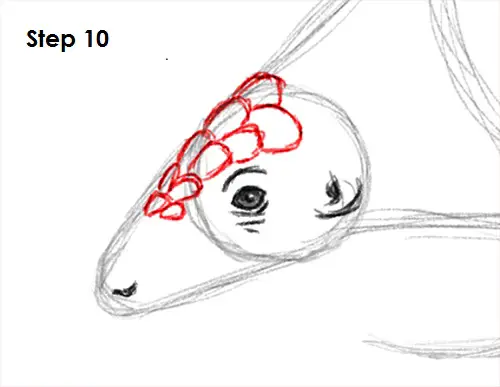
Step 10: Draw the scales on top of the pangolin's head. First draw two small circles on the muzzle. Then draw arcs that get progressively bigger as you move along the back of the head. Follow the path of the muzzle and head and be sure not to cover the eye.
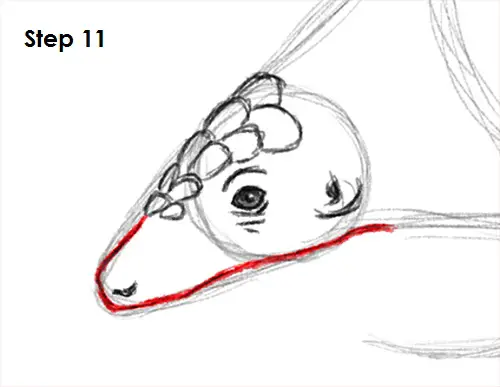
Step 11: Draw the rest of the pangolin's muzzle and jaw by using the arc and circle as guides.
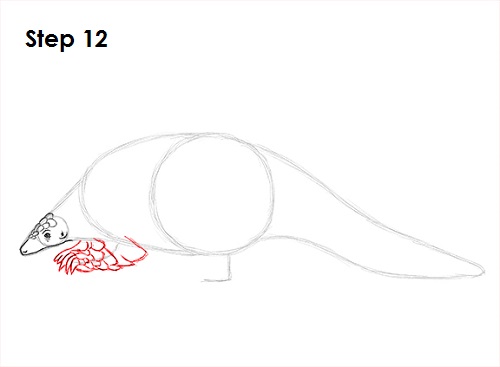
Step 12: Draw the pangolin's front feet using the initial line as a guide. First lightly sketch a curved arc around the line to give the foot more girth. Draw the long claws at the tip of the arc using curved lines that come to a point. Draw the pangolin's scales covering the foot using the lightly sketched arc as a guide. The scales are made up of small arcs that overlap each other. Draw the scales bigger as you move up on the pangolin's leg. Draw the visible portion of the foot on the other side.
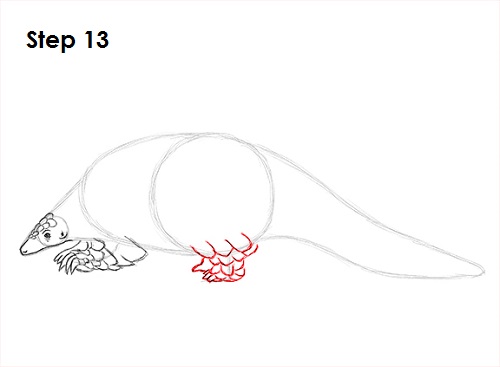
Step 13: Draw the pangolin's hind legs using the line as a guide. First sketch the foot lightly to give it girth, then cover it with scales. Draw the bigger scales at the top first, then draw the smaller ones underneath. Draw the pangolin's claws at the end and draw the visible portion of the leg on the other side too.
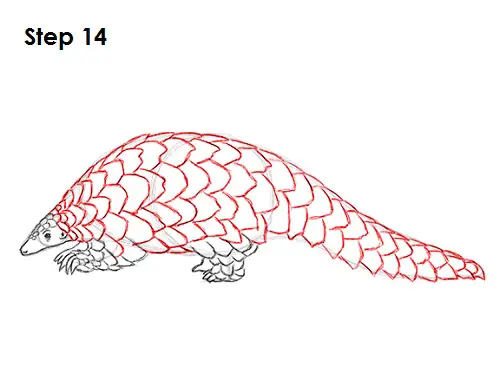
Step 14: Draw the scales on the pangolin's body and the tail using the initial shapes as guides. Start with the scales near the neck. Draw the scales small first, then bigger as you move toward the pangolin's back. The scales near the front have a more round shape, while the ones in the back come to a point. Drawing the pangolin's scales can get very tricky, so please PAUSE the video as you draw along or use reference. The structure of the pangolin's scales is similar to a pine cone or an artichoke, so check those out if you have them and use them for reference. Adding the pangolin's scales can be very time-consuming and at times frustrating if you can't get the structure right, so be patient and take breaks. Adding the scales will get easier as you go along, and you'll get the hang of the overlapping configuration. The scales have a pentagonal shape, but don't make them too perfect. Give them bends and cracks for a more organic feel. The pangolin's scales are made of keratin, which are the same fibrous proteins that our nails and hair are made of! The scales at the base of the pangolin's tail are huge, and they get smaller toward the tip. Notice how the tail has the same three-scale structure throughout.









